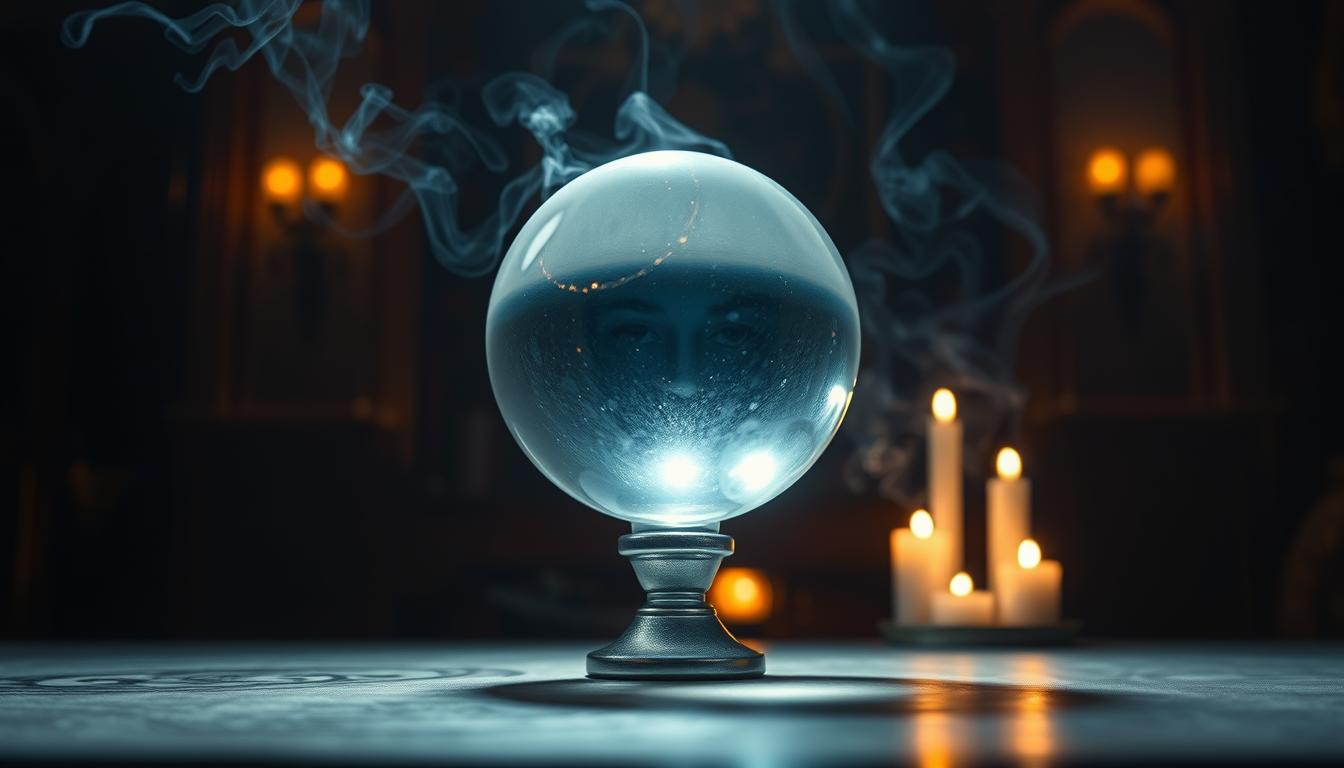Have you ever wondered what it means to be a clairvoyant? This term, rooted in the French words clair (clear) and voyance (vision), refers to a person believed to have the ability to perceive things beyond the normal senses. Often associated with psychic phenomena, clairvoyance is described as the capacity to see or understand what is hidden from ordinary awareness.
The concept of clairvoyance has fascinated people for centuries. It’s not just about predicting the future but also about gaining insights into the unseen. From historical accounts to modern interpretations, this ability has been both celebrated and debated. Whether you’re curious about its origins or how it’s viewed today, this article will explore the meaning, synonyms, and cultural significance of being a clairvoyant.
Join us as we dive into the intriguing world of clairvoyance, uncovering its roots and how it shapes our understanding of reality. Ready to learn more? Let’s get started!
Key Takeaways
- Clairvoyance is the ability to perceive information beyond normal senses.
- The term originates from French, meaning “clear vision.”
- It’s often linked to psychic or paranormal phenomena.
- Clairvoyance has historical, scientific, and modern interpretations.
- It involves seeing or understanding what is hidden from everyday awareness.
Defining Clairvoyant: Insights Into Meaning and Synonyms
The concept of seeing beyond the visible has intrigued humanity for centuries. Rooted in the French words clair (clear) and voyance (vision), the term “clairvoyant” describes someone with the ability to perceive what lies beyond ordinary senses. Over time, this idea has evolved, blending into various cultural and spiritual traditions.

The Origins of the Term
The word “clairvoyant” first emerged in the 17th century, drawing from French linguistic roots. It was initially used to describe individuals believed to possess extraordinary vision—not just physical, but spiritual. Historical texts from that year often reference clairvoyance in the context of oracles and prophecies, where it was seen as a divine gift.
Religious traditions, such as those in ancient Greece and Egypt, also embraced the idea of perceiving the unseen. These practices often involved rituals to awaken the mind and unlock hidden knowledge. Over time, the term gained broader usage, becoming synonymous with psychic abilities and extrasensory perception.
Linguistic Nuances and Synonym Usage
Clairvoyance is often confused with similar abilities, but its linguistic nuances set it apart. While terms like “telepathy” and “precognition” focus on specific aspects of psychic phenomena, clairvoyance encompasses a broader range of perception. It’s about seeing what’s hidden, whether in the past, present, or future.
Here’s a breakdown of key synonyms and their subtle differences:
| Term | Meaning |
|---|---|
| Telepathy | Mind-to-mind communication |
| Precognition | Foreknowledge of future events |
| Extrasensory Perception | Perception beyond the five senses |
| Second Sight | Ability to see spirits or future events |
| Sixth Sense | Intuitive awareness beyond normal senses |
Each word carries its own unique connotations, but all share the common thread of transcending ordinary perception. Understanding these distinctions helps clarify the multifaceted nature of clairvoyance.
Understanding the Clairvoyant Gift
What if you could see beyond what’s right in front of you? The clairvoyant gift is often described as a unique way of experiencing the unseen. It’s not just about physical sight but about tapping into a deeper level of awareness. This ability allows individuals to perceive information that’s hidden from ordinary senses, offering insights into the past, present, or even the future.
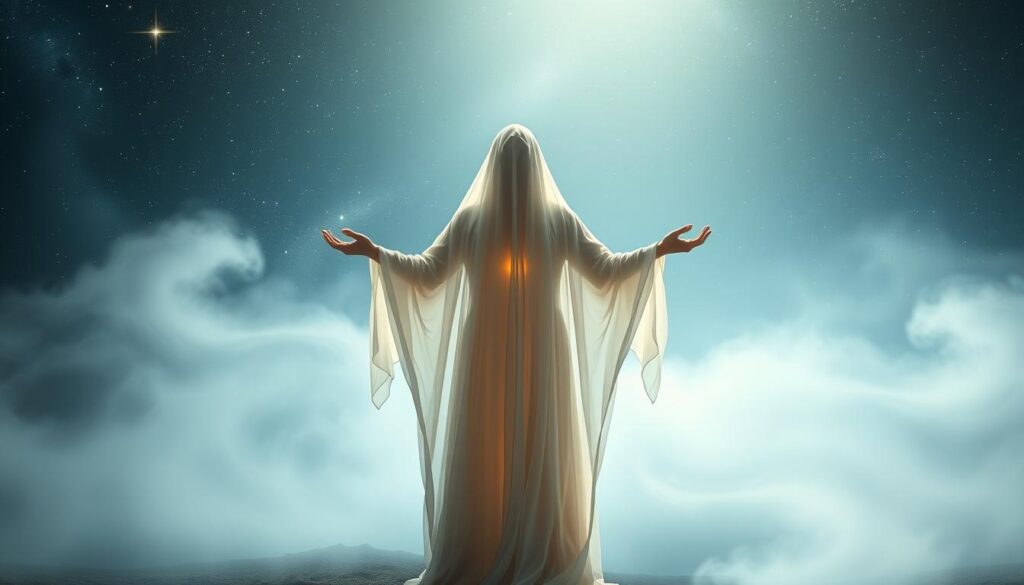
The Ability to Perceive Beyond the Senses
Clairvoyance goes beyond the five senses. It’s about receiving information through nontraditional means, like vivid mental images or sudden flashes of insight. For example, some people report seeing a vision of an upcoming event in their mind’s eye. These experiences can feel as real as physical sight, even though they’re not tied to the external world.
This ability isn’t limited to seeing the future. It can also involve understanding hidden truths or connecting with energies that others can’t perceive. Whether it’s a detailed vision or a subtle feeling, clairvoyance opens doors to a world beyond the obvious.
Clairvoyance in Modern Context
In today’s world, clairvoyance is often explored through scientific and psychological lenses. Researchers study extrasensory perception in controlled experiments, seeking to understand how the mind processes information beyond the senses. While skepticism exists, many people share personal stories of accurate visions that later unfolded in real life.
For example, some individuals describe seeing a specific event in their dreams, only to witness it happen days or weeks later. These accounts highlight the mysterious nature of clairvoyance and its potential to offer glimpses into the unknown. Whether through science or personal experience, the clairvoyant gift continues to captivate and intrigue.
Historical and Spiritual Perspectives
Throughout history, the ability to perceive the unseen has shaped cultures and beliefs. From ancient oracles to revered saints, this gift has been celebrated as a connection to the divine. Let’s explore how clairvoyance has been interwoven with spiritual traditions and the lives of influential figures.
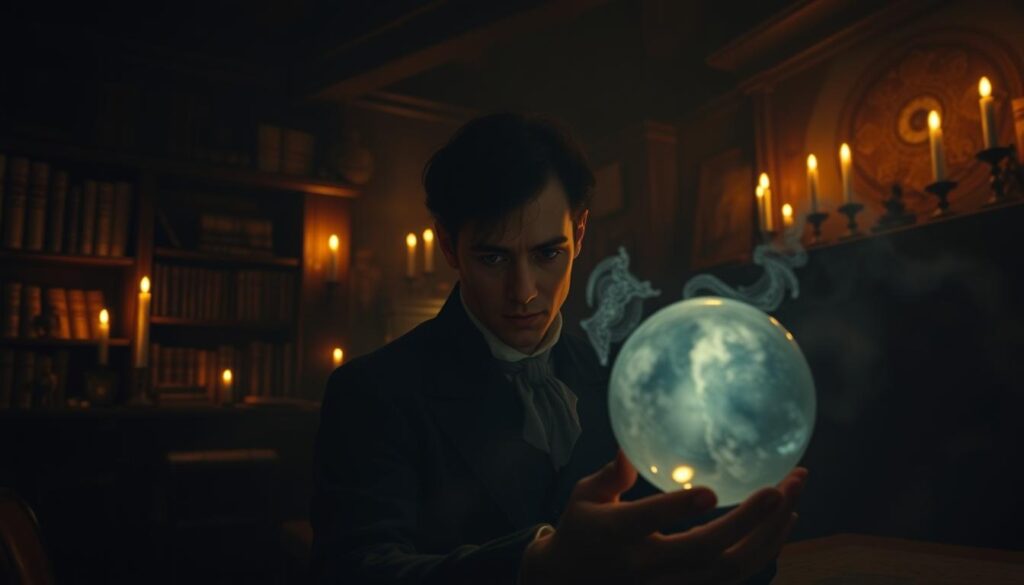
Clairvoyance in Ancient Traditions
In ancient civilizations, clairvoyance was often seen as a divine source of wisdom. Oracles in Greece, such as the famous Oracle of Delphi, were believed to channel the gods’ messages. These individuals were consulted for guidance on wars, harvests, and personal matters. Their visions were considered sacred and transformative.
Similarly, in Egypt, priests and priestesses used rituals to tap into spiritual energy. They believed this energy allowed them to see beyond the physical world. These practices were deeply rooted in their religious and cultural traditions, shaping their understanding of reality.
Influential Figures and Their Experiences
Many historical figures are remembered for their extraordinary abilities. Nostradamus, a 16th-century seer, is one of the most famous. His prophecies, written in cryptic verses, continue to intrigue people to this day. While some dismiss his work as coincidence, others see it as evidence of a profound gift.
Religious figures like Saint Joan of Arc also reported vivid experiences. She claimed to receive visions from saints, guiding her actions during the Hundred Years’ War. These accounts highlight how clairvoyance has been viewed as both a spiritual and practical gift.
Here’s a look at how clairvoyance was understood across different cultures:
| Culture | Practice | Key Figures |
|---|---|---|
| Ancient Greece | Oracles | Oracle of Delphi |
| Ancient Egypt | Priestly rituals | High Priests |
| Medieval Europe | Religious visions | Saint Joan of Arc |
| Renaissance France | Prophecies | Nostradamus |
These traditions show how clairvoyance has been a powerful source of insight and inspiration. Whether through oracles, saints, or seers, the ability to perceive the unseen has left a lasting mark on human history.
Scientific Perspectives and Skepticism
Science has long sought to understand the mysteries of perception beyond the ordinary senses. While some view clairvoyance as a way to access hidden knowledge, others approach it with skepticism. This section explores the new methods researchers use to study this phenomenon and the critiques that challenge its validity.
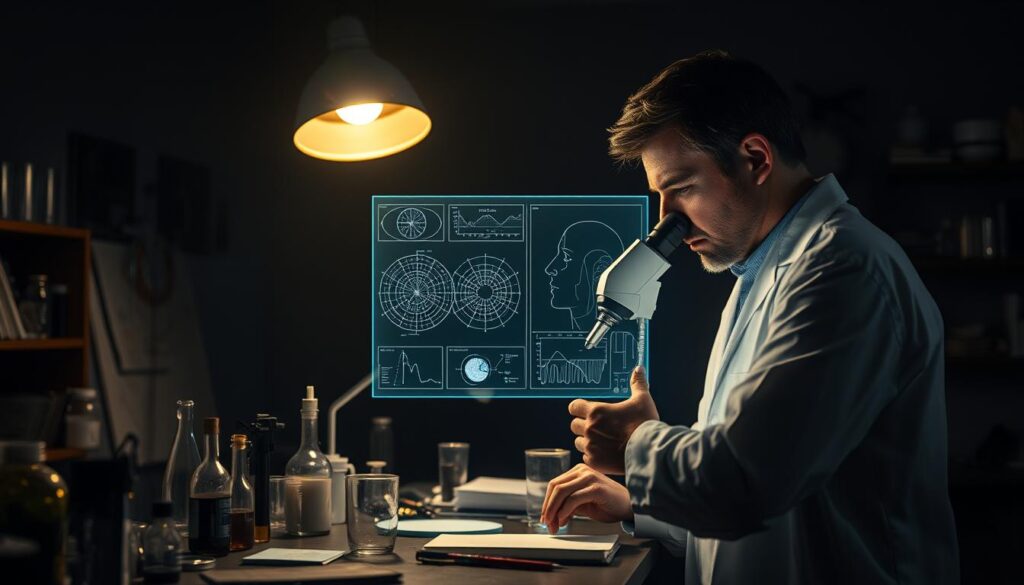
Research Findings and Experimental Approaches
Modern science has developed new ways to test extrasensory perception. One notable approach involves using devices to measure if a person’s eye or mind can access information beyond known senses. For example, experiments often use Zener cards, which feature symbols like stars or circles, to test participants’ ability to “see” hidden images.
Studies by researchers like J.B. Rhine in the 1930s aimed to provide evidence for clairvoyance. While some results seemed promising, critics pointed out issues like statistical replicability. This means that findings couldn’t always be repeated in new experiments, raising doubts about their reliability.
Critiques and Alternative Explanations
Skeptics argue that many clairvoyant experiences can be explained by natural phenomena. For instance, confirmation bias—where people remember hits and forget misses—can make experiences seem more accurate than they are. Sensory leakage, where subtle cues influence perceptions, is another common critique.
James Randi, a well-known skeptic, conducted experiments to debunk claims of clairvoyance. He often found that what seemed like extraordinary abilities had simpler explanations. For example, a person might unconsciously pick up on body language or environmental cues.
Despite these critiques, many people find personal significance in their experiences. Science continues to explore these phenomena, offering a balanced view that respects both skepticism and the mysteries of human perception.
Real-Life Applications and Examples
Many people have shared stories of moments when their intuition seemed to go beyond the ordinary. These experiences, often described as a gift, offer a glimpse into how clairvoyance manifests in everyday life. From unexpected insights to life-changing visions, these narratives help demystify the concept and ground it in real experience.
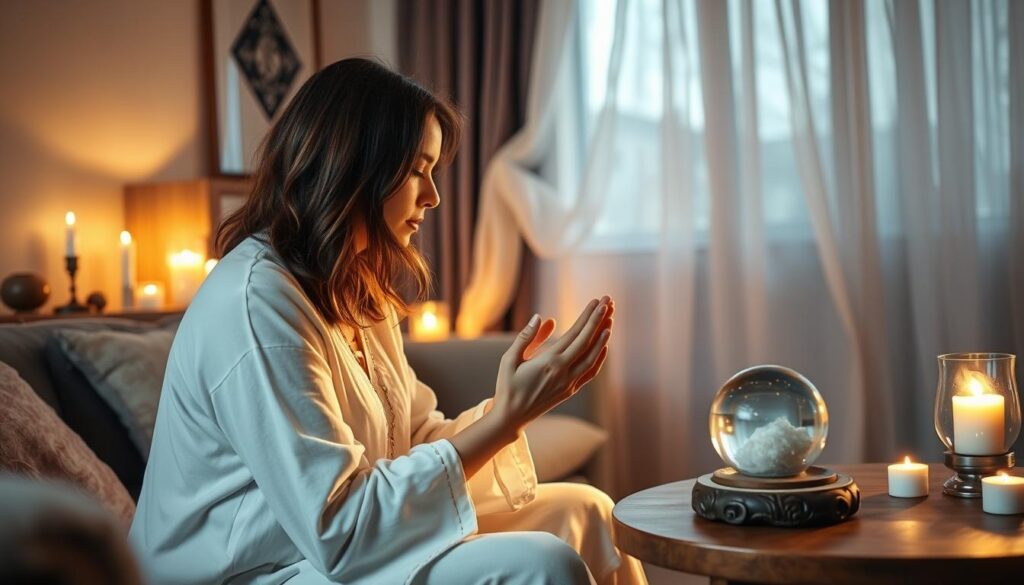
Case Studies and Personal Narratives
One notable example is the Moberly-Jourdain Incident of 1901. Two academics reported vivid visions of 18th-century figures while visiting Versailles. This event, often cited as an example of retrocognition, highlights how the sense of the past can intrude on the present.
Edgar Cayce, known as the “sleeping prophet,” is another fascinating case. His ability to provide detailed readings while in a trance state amazed many. His predictions and insights, spanning health, history, and the future, showcase the breadth of this gift.
In modern times, individuals often describe moments of heightened awareness. For instance, someone might have a sudden sense of danger before an accident occurs. These stories, while anecdotal, contribute to a broader understanding of how clairvoyance might function in daily life.
Here are a few ways these experiences manifest:
- Visions of future events that later come true.
- A sudden sense of knowing something without explanation.
- Dreams that provide insights into hidden truths.
These examples, drawn from different walks of life, show how clairvoyance can offer an other perspective on reality. Whether through historical accounts or personal stories, these narratives invite us to consider the possibilities of human perception.
Developing Your Clairvoyant Abilities
Unlocking your intuitive potential can open doors to a deeper understanding of the world around you. Whether you’re just starting to notice subtle signs or looking to enhance your skills, this journey begins with awareness and practice. Let’s explore how you can nurture this gift and make it a part of your daily life.
Recognizing Early Signs and Intuitive Insights
Many people experience early signs of intuitive abilities without realizing it. These can include vivid dreams, sudden flashes of insight, or a strong sense of knowing something without explanation. Paying attention to these moments is the first step in developing your skills.
For example, you might have a dream that later comes true or feel an inexplicable urge to take a different route, only to avoid an accident. These experiences are often dismissed as coincidence, but they can be early indicators of a growing intuitive ability.
Techniques to Enhance Your Gift
There are several methods to strengthen your intuitive skills. Meditation is a foundational practice that helps quiet the mind and heighten awareness. Spending time in nature can also create a supportive place for connecting with your inner self.
Keeping a journal to track your experiences is another effective technique. Write down your dreams, intuitive insights, and any patterns you notice. This not only helps you recognize your progress but also builds confidence in your abilities.
Here are some additional techniques recommended by experts:
| Technique | How It Helps |
|---|---|
| Visualization Exercises | Strengthens mental imagery and focus |
| Mindfulness Practices | Enhances present-moment awareness |
| Divination Tools | Provides structure for intuitive insights |
| Mentorship | Offers guidance and validation |
Consistent work and an open mind are key to developing your abilities. Remember, the world is full of opportunities to explore and strengthen your intuitive sense. With patience and practice, you can unlock a deeper connection to the unseen.
Conclusion
Exploring the world of psychic abilities opens up a realm of possibilities beyond the ordinary. From its historical roots to modern interpretations, the concept of perceiving the unseen has fascinated anyone curious about the unknown. Whether through spiritual traditions or scientific inquiry, the journey to understand these gifts is both intriguing and enlightening.
While skepticism exists, many psychics and mediums have shared experiences that challenge conventional understanding. These individuals often provide comfort and insights, helping others connect with deeper truths. For anyone interested in exploring such abilities, there are numerous methods and resources available to guide the way.
As you reflect on the information shared, consider how these insights might resonate with your own experiences. The world of psychic phenomena invites curiosity and open-mindedness. Take the next step—explore workshops, read trusted sources, or connect with a reputable medium to deepen your understanding.

